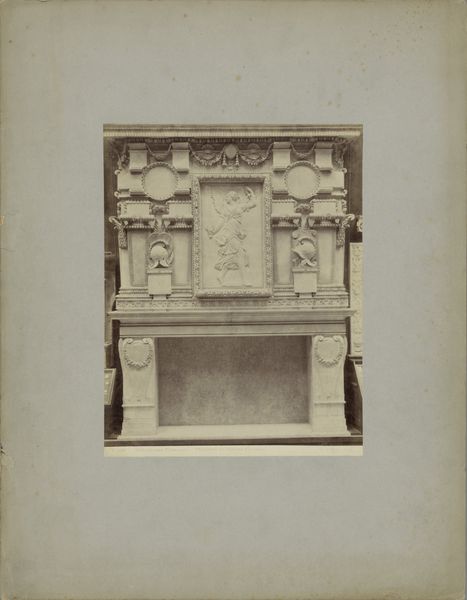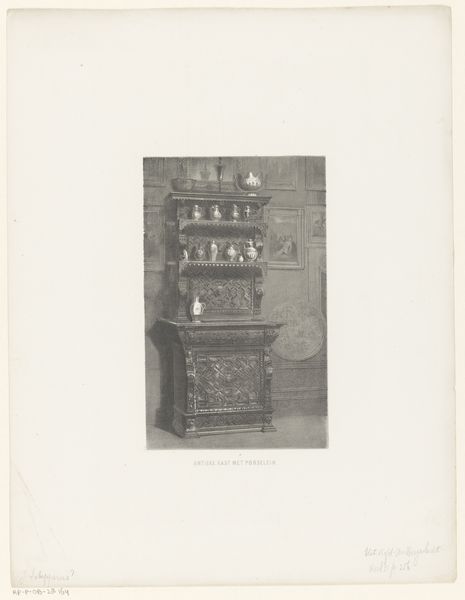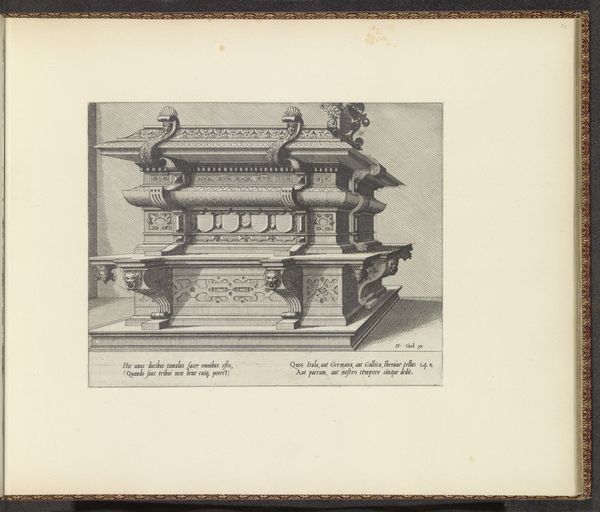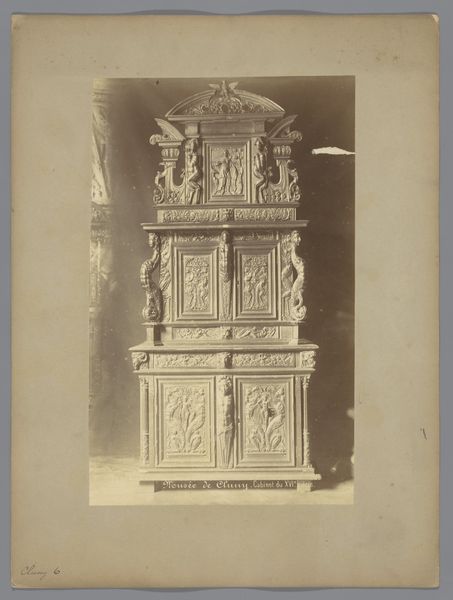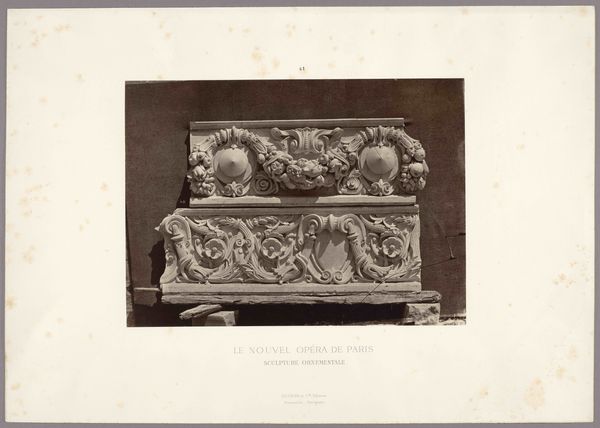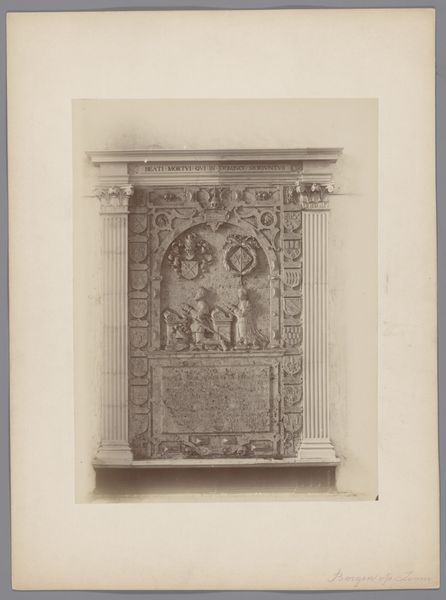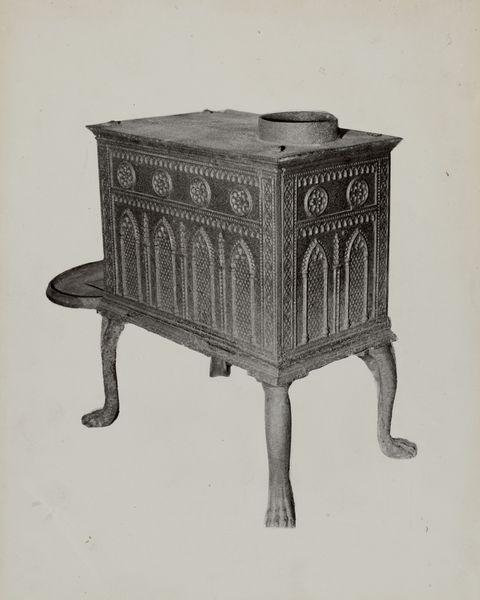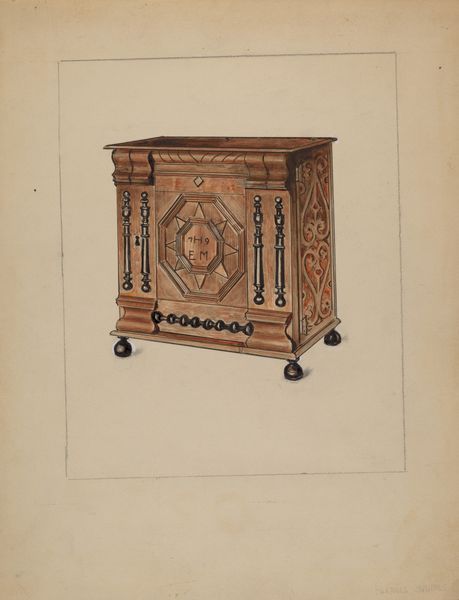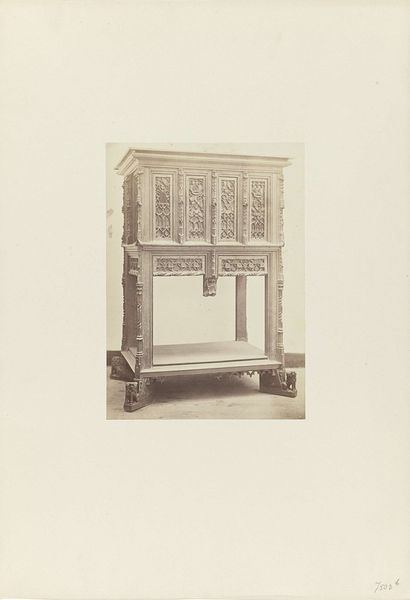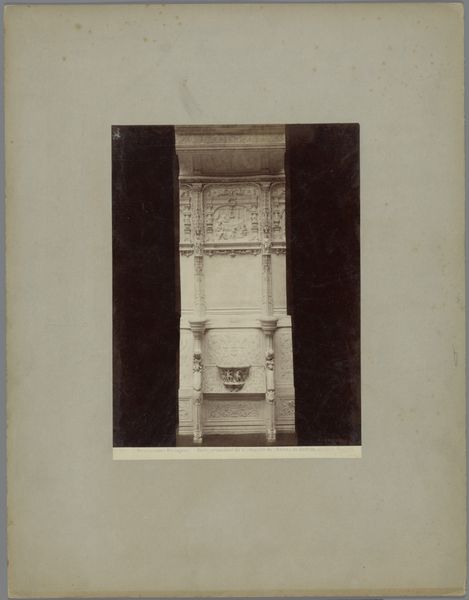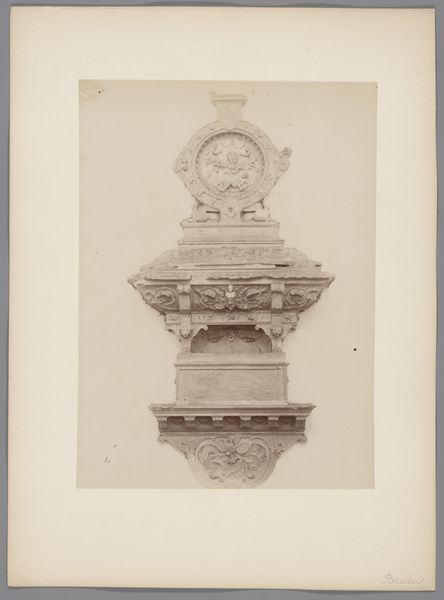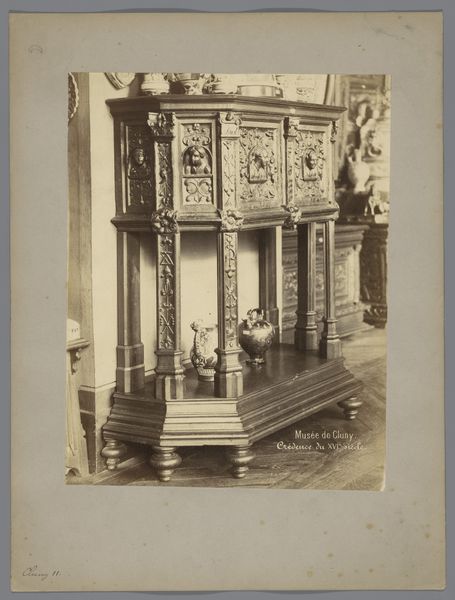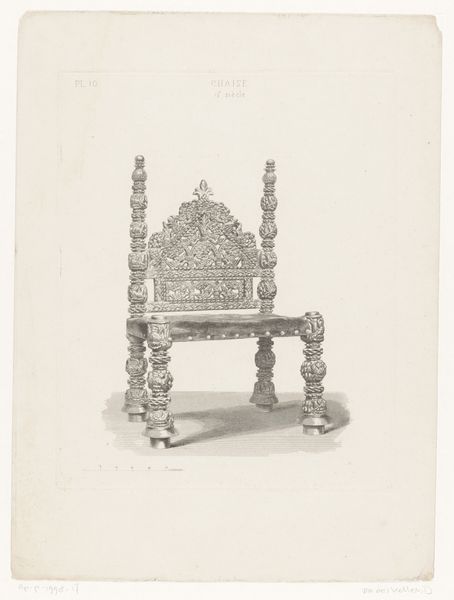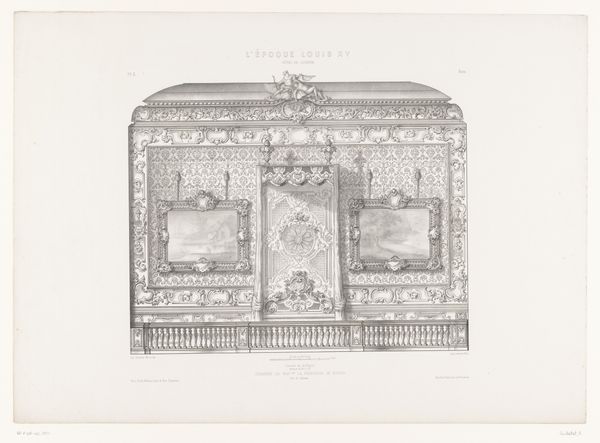
Opstelling van een pronkkast in het Bayerisches Nationalmuseum te München 1876
0:00
0:00
print, photography
#
still-life-photography
# print
#
photography
#
realism
Dimensions: height 223 mm, width 224 mm
Copyright: Rijks Museum: Open Domain
Curator: The photograph before us, taken in 1876, depicts what is labeled “Opstelling van een pronkkast in het Bayerisches Nationalmuseum te München.” The Rijksmuseum houses this print, an example of early museum documentation through photography. Editor: It's immediately striking – somber, like a stage set waiting for a tragic play to begin. The stark monochrome highlights this elaborate cabinet, making it seem both precious and haunted. Those twisted legs, they feel a little precarious, don't they? Curator: The twisting is significant. These so-called Solomonic columns—referencing the Temple of Solomon—became fashionable symbols of authority and wisdom in the baroque era, and, of course, faith. This photograph captures not just the object but also echoes the status associated with it. Editor: Yes! I can see the historical weight in this image. Those inlaid panels with what look like carved ivory evoke worlds far beyond that display case. Curator: Precisely. The photograph invites us to consider what values the objects signified. Think about it—a camera carefully capturing and codifying aristocratic wealth for a wider public, and this exhibition as an archive for the values associated with heritage. Editor: What do you think a visitor felt looking at such objects? I find it interesting that we view this scene through a picture! I wonder whether these images made such items less foreign and unknowable... I imagine you can trace it, for better or for worse, through history to our museum visits today. Curator: I suspect a frisson of both aspiration and detachment. The act of documentation gives the objects longevity but transforms how they're understood, pulling them into circulation beyond their original setting. Editor: That makes me consider photography's impact – how it makes the distant near, transforms the artifact. It’s a snapshot, really, of history mediating its values through objects and the camera that views it. Thank you for sharing this moment in time.
Comments
No comments
Be the first to comment and join the conversation on the ultimate creative platform.
